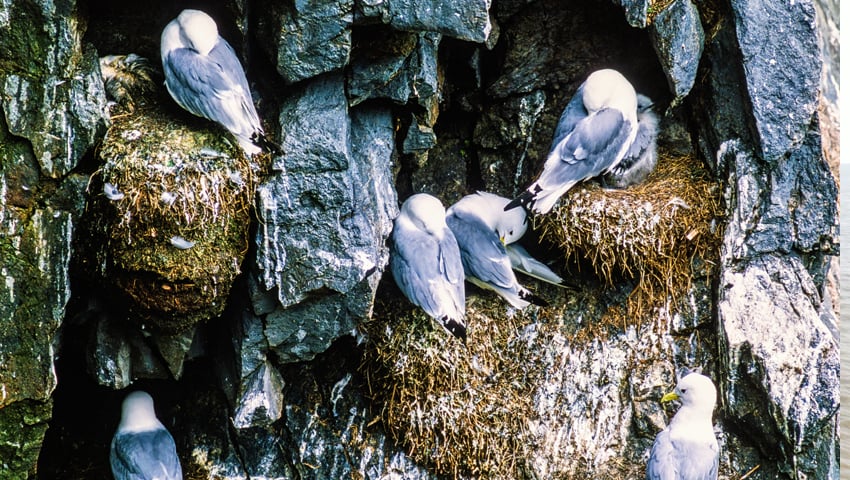Ørsted energy has identified an novel way to support kittiwake populations potentially affected by its offshore wind installations.
The Danish company has built three bespoke artificial nesting structures off the coastlines of Lowestoft’s South Beach and the RSPB Minsmere Nature Reserve.
Eleni Antoniou, an Environmental Manager at Ørsted who worked extensively on the project, said, “This is a first of its kind project that required a great deal of collaborative work with stakeholders, architects, engineers, and ecologists to develop a bespoke solution. We have already had our first kittiwake visitor to the structures and look forward to seeing our first long-term residents.”
Offshore wind
Hornsea 3 will have a generating capacity of 2.9GW – enough green energy to power more than 3 million UK homes.
The wind farm, which will sit approximately 120 km off the Norfolk coast and 160 km off the Yorkshire coast, is one of the UK’s largest infrastructure projects. Following its expected completion at the end of 2027, it will mark a huge step toward the UK’s green energy transition and goal of net-zero carbon emissions by 2050.
Given the magnitude of Hornsea 3, it is considered a nationally significant infrastructure project. The UK government granted planning permission in December 2020 with the requirement that Ørsted included ecological measures to mitigate any potential impacts the development may have on nature and the local ecosystem.
Specifically, the company was required to include ecological compensation measures for black-legged kittiwake, a gull species whose population could potentially be impacted by the wind farm.
Supporting a vulnerable seabird
Kittiwake are small, gentle, grey and white gulls that feed only on marine fish and small crustaceans. The gulls spend winters at sea, only returning to land to nest between March and September.
Kittiwake populations are declining in the UK. Researchers believe this to be a result of prey shortages and climate change. The species is listed as vulnerable and at risk of extinction on the UK’s Red List for Birds of Conservation Concern.
But while kittiwake populations have been declining in some areas, they have colonised areas of North East England and East Suffolk, demonstrating the coastline’s ecological suitability for the species.
To help support the local colonies and encourage new chicks to the population, Ørsted was required to construct artificial nesting structures for kittiwake on the coastlines of North East England and East Suffolk.
Innovative artificial nesting structures
Individual birds are strongly attracted to areas where other kittiwake are already nesting, so locating artificial nesting structures close to existing colonies is essential to ensure they become occupied.
Ørsted conducted a thorough consultation on the ideal location for the artificial nesting structures with Natural England, the RSPB, and other experts to decide on where to site the structures.
So far, Ørsted has built three bespoke artificial nesting structures off the coastlines of Lowestoft’s South Beach and the RSPB Minsmere Nature Reserve.

Image: Ørsted, Orsted Artificial Nesting Structure, R7M
Designed in collaboration with ornithologists, ecologists, architects, engineers and local experts, the structures sit about 1km off the coastline and have narrow ledges to mimic the cliff nesting sites.
Each octagonal structure can welcome 500 pairs of kittiwake, providing a safe place to nest away from towns and potential predators. The pitched roof and overhang were specifically designed to mitigate avian predators.
They are fitted with sliding panels with one-way vision, designed so that researchers can observe the kittiwake onsite without disturbing them. The birds can also be remotely monitored via cameras placed inside each structure.
The main structures are painted off-white to blend into the horizon, while the bases are yellow so mariners can safely navigate around them.
Ready for long-term residents
While the artificial nesting structures are onsite, no kittiwake have taken up permanent residence yet. We expect it to take a few years for the kittiwake to colonise the structures.
To encourage kittiwake to use them, 3D-printed ‘decoys’ made from recycled plastic have been placed on the nesting ledges.
In the meantime, Ørsted will continue to share information about the birds and how they use these structures through the Seabird Monitoring Programme and the Lowestoft Kittiwake Partnership, for which Ørsted provides funding.
